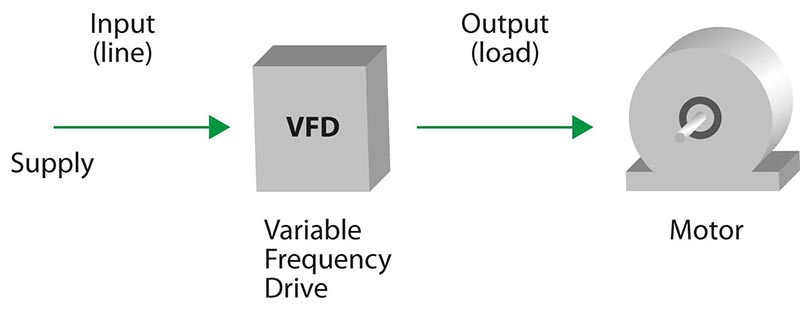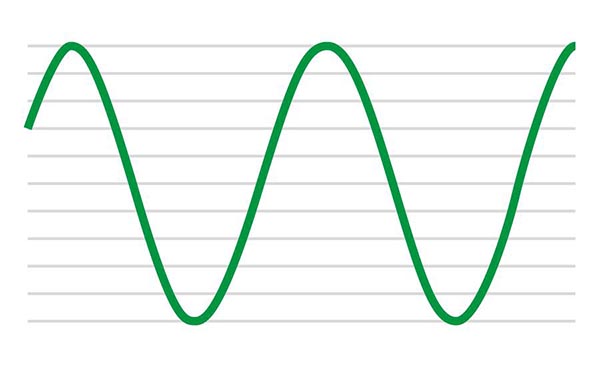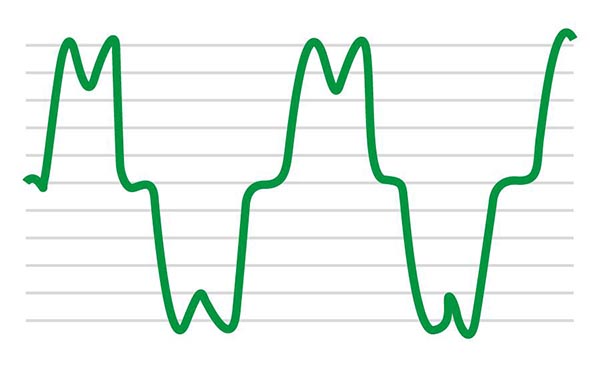Power Quality products act as electrical filters by removing or reducing the level of harmful harmonics and re-shaping the sinewave for the longevity of operation of electrical systems. RFI filters reduce the level of conducted RFI and EMC Shielding products reduce the effects of radiated RFI.
Harmonics are very harmful within an electrical system and can have serious consequences. The presence of harmonics reduces the life of equipment and creates heat, which stresses cables and equipment. It is possible that the investment that you made in your motors & drives will not be realised if they are damaged and need replacing before their expected life span. The presence of harmonics will also mean that although you will get billed for the power that you are supplied, a large percentage of that power may be unusable. Harmonic mitigation is taking action to minimise the presence of harmonics in your electrical system and can achieve great cost savings.
Variable Speed Drives (VSD’s) are prolific creators of harmonics in electrical systems and as a result, most of the harmonic mitigation effort focuses on the input side and output side of a VSD. For the mitigation of harmonics on the input side (line side) of a VSD we recommend Line Reactors, Passive Harmonic Filters and Active Harmonic Filters. For the mitigation of harmonics on the output side (load side) of a VSD we recommend Load Reactors, dV/dT Filters and Sinewave Filters.

RFI (Radio Frequency Interference) is a high frequency disturbance that affects an electrical circuit due to either electromagnetic conduction or electromagnetic radiation emitted from an external source. The disturbance may interrupt, obstruct, degrade or limit the effective performance of the circuit. RFI can wreak havoc with your electronics, computers, instrumentation and telephones, making your workplace difficult to work in. Since most machines have control electronic circuits, they may become difficult to control or unreliable.
Depending on your application, there are many ways to reduce the effects of RFI. For conducted RFI, you can choose from a large range of RFI filters, chokes & pulse transformers. For radiated RFI, you can choose from a large range of shielding products.
Definition of Power Quality
For electrical systems to function in their intended manner without significant loss of performance or life, they require a supply of electricity that is of good quality. Good quality electrical power has the following characteristics:
1) It must have a continuity of service (not be interrupted).2) It must have a very low Harmonic content.
3) It must have a very low variation in the voltage magnitude.
4) It must have very low transient voltages and currents.
The term ‘clean power’ is used to describe electricity that is considered to be of good quality (see above) with particular reference to a very low harmonic content. Therefore, the term ‘dirty power’ is used to describe electricity that is considered to be of low quality (opposite to the above) with particular reference to a very high harmonic content.
In Australia, our electricity is supplied in alternating current at a frequency of 50Hz. In alternating current (AC) the movement of electric charge periodically reverses direction. In direct current (DC), the flow of electric charge is only in one direction.
50Hz means that the AC has a frequency of 50 cycles per second. This is also known as the ‘fundamental’ frequency. AC is the form in which electricity is delivered to businesses and residences. Most electrical devices (such as motors) need clean electricity to function properly. This means that the electrical supply needs to be a clear sinusoidal wave, such as in the diagram below.

What are harmonics?
In simple terms, harmonics are extra frequencies that when present in an electrical circuit, distort the AC sine wave. A harmonic of a wave is a component frequency of the signal that is an integer multiple of the fundamental frequency.
For example, if the fundamental frequency is f, the harmonics have frequencies 2f, 3f, 4f, . . . etc. Harmonic frequencies are equally spaced by the width of the fundamental frequency and can be found by repeatedly adding that frequency. In the case of the Australian electricity supply, the fundamental frequency is 50Hz. The frequencies of the harmonics are 100Hz, 150Hz, 200Hz, 250Hz, 300Hz, 350Hz and so on. 150Hz is called the ‘third’ harmonic (3 x 50Hz), 250Hz is called the ‘fifth’ harmonic (5 x 50Hz), etc. The presence of harmonics in an electrical system distorts the clean shape of a sine wave.

> Harmonic Mitigation Products
What is RFI (EMI) / EMC ?
EMI (Electromagnetic Interference) is also called RFI (Radio Frequency Interference). Although the terms EMI and RFI are often used interchangeably, EMI is actually any frequency of electrical noise, whereas RFI is a specific subset of electrical noise on the EMI spectrum. RFI is a disturbance that affects an electrical circuit due to either electromagnetic conduction or electromagnetic radiation emitted from an external source.
The disturbance may interrupt, obstruct, degrade or limit the effective performance of the circuit. The source may be any object, artificial or natural, that carries rapidly changing electrical currents, such as an electrical circuit or the Sun.
There are two types of RFI.
Conducted RFI is unwanted high frequencies that ride on the AC wave form. Radiated RFI is emitted through the air. There are many pieces of equipment that can generate RFI, variable frequency drives included.
EMC (Electromagnetic Compatibility) means nothing more than ‘an electronic or electrical product shall work as intended in its environment. The electronic or electrical product shall not generate electromagnetic disturbances, which may influence other products’. In other words, EMC deals with problems of noise emission as well as noise immunity of electronic and electrical products and systems. Electromagnetic disturbances occur as conducted interference as well as radiated emissions and immunity problems.


 RU
RU IT
IT ES
ES DE
DE